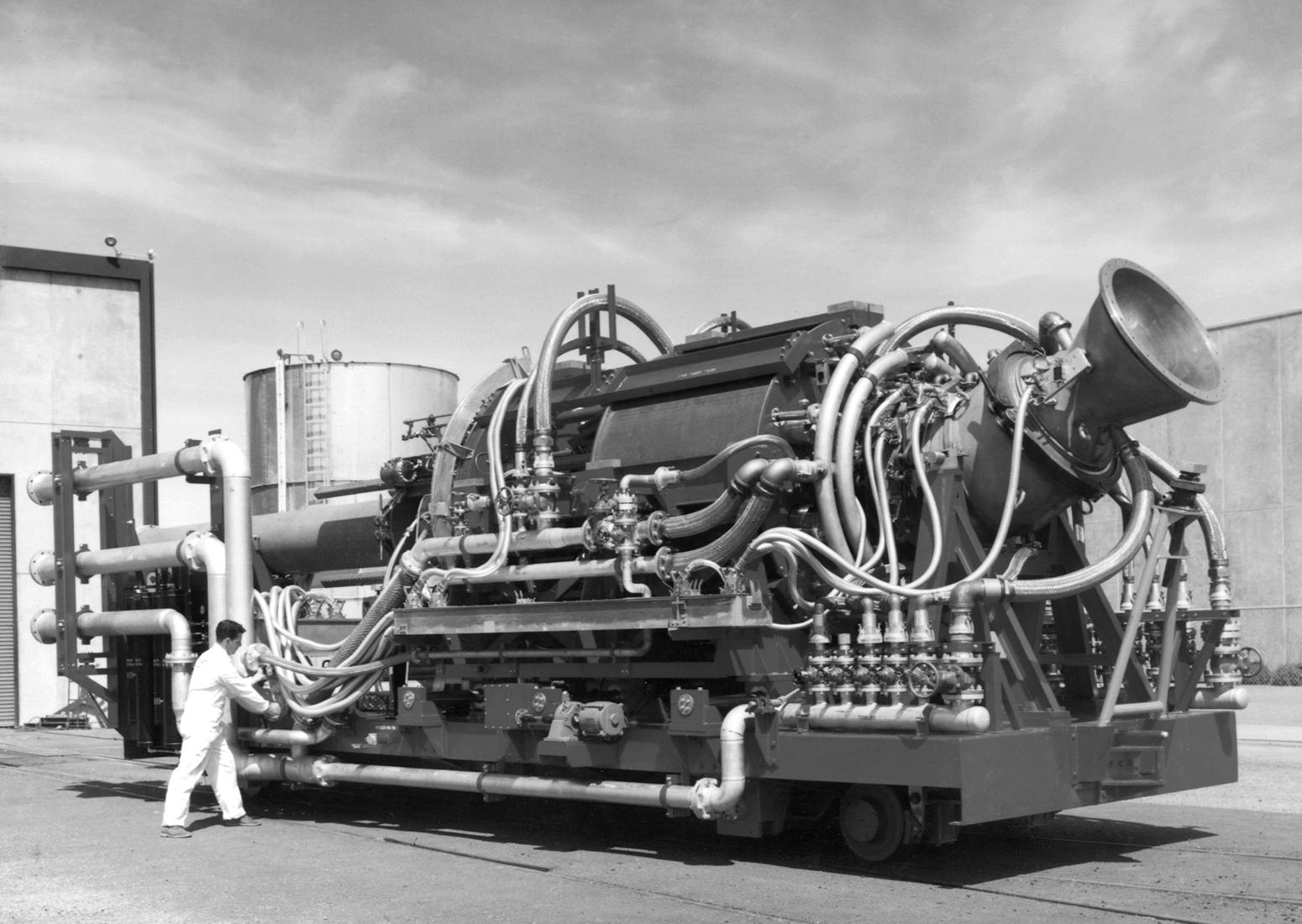Since the dawn of the Atomic Age at the end of World War II, there have been a lot of nuclear weapons designed and built. Even a limited nuclear war could have catastrophic consequences and we have been fortunate, indeed, to have escaped such a war so far. In addition to the weapons that have been built, other nuclear weapon designs have been propose but never actually constructed. As horrible as existing nuclear weapons are, some of the designs that never got off the drawing boards were actually worse.
IN 1955, a new U.S. Air Force project was undertaken to create what was called a Supersonic Low Altitude Missile or SLAM. SLAMs were unmanned nuclear-powered ramjets that could carry sixteen thermonuclear warheads deep into enemy nations.
The use of a nuclear propulsion system would have given the SLAMs a range of one hundred and thirty thousand miles which is equal going around the Earth at least four time. The reactor powering the SLAM was not shielded and the neutron flux from the engine would have injured or killed any human or animal under the flight path. The exhaust from the nuclear engine would have contained radioactive materials that would have contaminated enemy territory. The sonic shockwave of the passage of a SLAM would have damaged structured on the ground and possible killed people. Sixteen nuclear warheads could be dropped on selected targets and, finally, the SLAM could be used as a dirty bomb by deliberately crashing it on a target.
The engine for the SLAM was developed as its own project under the name Project Pluto. It was a ramjet design which utilized the intense heat generated by the nuclear reactor to heat the air that entered through the ramjet intake. Two prototype engines were created under Project Pluto, the Tory-IIA and the Tory-IIC. These engines were tested in the Nevada desert. Special ceramic materials had to be created to withstand the heat generated by the nuclear reactor. Other than the ramjet intake, the SLAMs would have looked like conventional missiles without wings but with small fins for steering. It would have been able to reach speeds four times the speed of sound.
Serious concerns were raised about the practicality of the SLAMs. Aside from questions about cost and efficacy, there were questions about how and where to test such a dangerous radiation spewing missile. The creation of Intercontinental Ballistic Missiles made the idea of SLAMs obsolete. Advanced radar systems also made the idea of flying SLAMs at very low altitude to avoid radar impractical. The SLAM project only went as far as designs and test before it was cancelled in 1964.
Fortunately, for the reasons cited, the SLAMs were never built. The idea of dying in a hydrogen bomb explosion is bad enough. But the idea of being hammered by sonic shock waves, irradiated by an unshielded nuclear reactor and subjected to radioactive fallout is truly terrifying.
Tory II-A nuclear ramjet engine for the SLAM:
